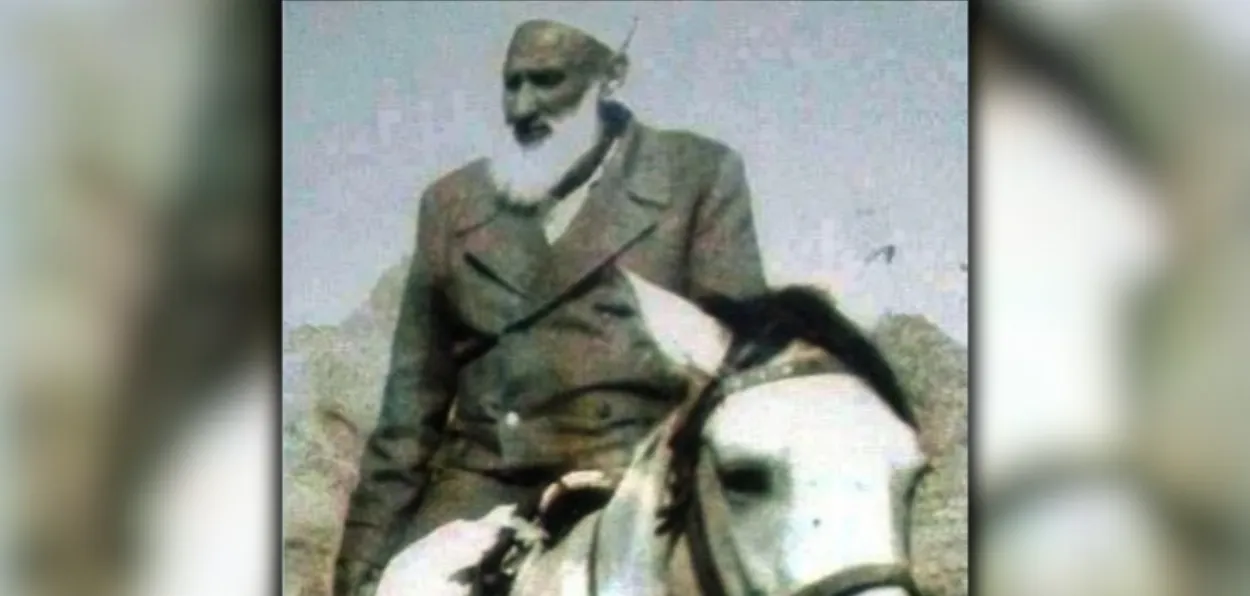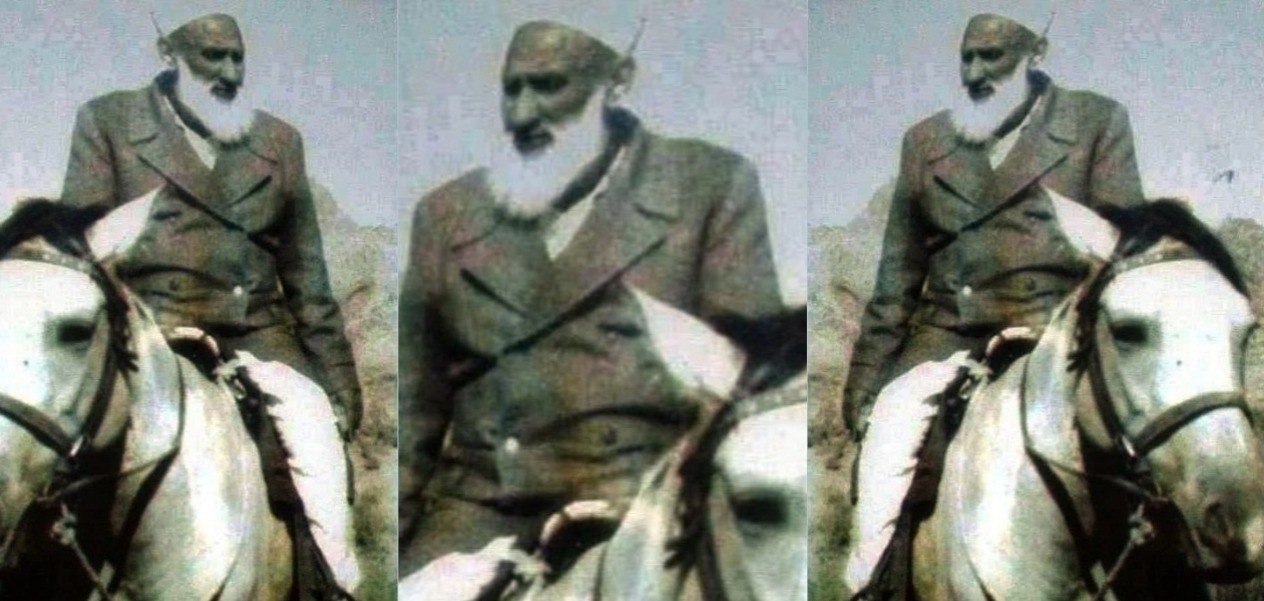
Saquib Salim
In May 1930, the United Press reported, “Mobile squadrons of British troops and bombing squadrons advanced today to attack the Afghan tribal leader Haji Turangzai who was encamped with his troops near Peshawar.”
Unsung Heroes of Freedom Struggle
The United Press reported on 10 March 1932, “Reports at Bombay today said 40,000 tribesmen commanded by the elderly chieftain, Turangzai, were marching on Peshawar to urge the government of India to release Mahatma Gandhi from jail, the Bombay correspondent of the Daily Herald reported. Reports said the tribesmen were firing on Royal Air Force planes from mountainous tracts near Peshawar.”
Who is this Haji of Turangzai whom the British feared and yet we don't read about him in textbooks?
Haji of Turangzai was born as Fazal Wahid in North West Frontier Province (NWFP) in 1842. His early education was at a local madrasa with ideological leanings towards Shah Waliullah. He went to Deoband (U.P) for further studies at Darul Uloom. There, he became friends with Sheikh-ul Hind Maulana Mahmud ul Hasan and went on a Haj pilgrimage with him, Maulana Qasim Nanotvi, and Rashid Ahmad Gangohi.
Deoband was the center of the Indian freedom struggle. Its founders Nanotvi and Gangohi, took up arms against the British in 1857 under the leadership of Haji Imdadullah Muhajir Makki. Maulana Mahmud was also a freedom fighter and was a prisoner of war in Malta during the First World War.
Haji of Turangzai met Haji Imadadullah, leader of the Indian revolutionaries in 1857, in Arab and pledged his allegiance to his mission to free India from the English rule.
Haji of Turangzai also took lessons from Mulla Najmuddin of Hadda (Mulla Hadda), a known anti-British scholar. He led several armed campaigns against the colonial rulers.

Haji Turangzai aka Fazal Wahid
Haji of Turangzai was inspired by two distinct yet converging ideologies - Sufism and anti-colonialism.
Sana Haroon, in her book, writes that Haji of Turangzai met Mulla Hadda after his return from Deoband. However, Altaf Qadir, an authority on Haji of Turangzai, claims his allegiance to Mulla Hadda predated his visit to Deoband and Haj.
Haji Turangzai became a link between Deoband-based and Sufi revolutionaries. When the First World War broke out, Maulana Ubaidullah Sindhi moved to Afghanistan; Haji Turangzai followed him. They planned to raise an army of tribals led by Haji Turangzai and other Islamic scholars who enjoyed a following among the local tribes. Raja Mahendra Pratap of the Arya Samaj movement and Maulvi Barkatullah of the Ghadar Party also joined them in Afghanistan. In 1915, they announced a provisional government in Kabul. Mahendra was its President, Barkatullah
the Prime Minister, and Ubaidullah the Home Minister.
However, the movement failed after Ubaidullah’s letters were intercepted by the English intelligence agencies in 1916. Several people were arrested and the plan was called the Silk Letter Conspiracy.
Haji of Turangzai continued organizing tribals against the British. He wanted Hindus, Muslims, and Sikhs to forge unity.
Altaf Qadir writes, “In the very first jargah, convened in Ghaziabad, he denounced all raiders as enemies of Islam. The Kamali and Pandiali, two branches of the local Mohmandan, were asked to restrain their bad characters for the future. He asked them to release all Hindus abducted from the Peshawar district. Both the tribes protested but were compelled to settle the matter according to his directives. The Hindus comprised the wealthy class of the district of Peshawar and were an easy target for kidnapping, to be released on ransom. Not only Hindus but sometimes wealthy Muslims were also the target of such kidnapping. As a true Muslim, Haji Sahib Turangzai was against such acts of the tribesmen. He did not want to harm the residents of the British territory, who were under British Imperialism.”
Altaf writes, “evidence suggests that Haji Sahib was in touch with revolutionary movements, led by non-Muslims. They included Naujawan Bharat Sabha and Ghadar Party; the latter sent two of its members to Lakarai. To deceive the official informers, they pretended to be Sikhs who wanted to embrace Islam.”
Haji of Turangzai organized an armed militia and attacked the British army at several posts from 1915 till his death in 1937. His impact was so much that the British Air Force dropped bombs on them to suppress them.
The Defence of India, an official journal of the British government, reported, “In August (1915), Haji Sahib of Turangzai, a notorious anti-British Mullah, gathered several thousand men around him in the Ambela Pass, and prepared to invade British territory. The men he had assembled around him were not to be despised. The majority of them were Pathan hillmen, trained in fighting from boyhood. Scattered among them were a group of Hindu fanatics. Then there were fakirs of many kinds, reputed miracle workers, men of extraordinary austerity-fierce, lean, keen religionists.”
Hajji Turangzai's movement synchronized with the movement led by Deoband-based Ulema. It had connections with revolutionary movements in Punjab, Bengal, NWFP, etc.
Many people don’t realize that Khan Abdul Ghaffar Khan was one of the followers of Haji of Turangzai. Ghaffar Khan and his Khudai Khidmatgars were part of the movement led by Haji of Turangzai. Yusuf Meherally, a popular leader from Mumbai, wrote in 1946, “Way back in 1911, while Khan Saheb was studying medicine in England, the Haji Saheb of Turangzai had started a movement for national education and established a chain of schools. Turangzai was only two miles from the village of the Khan brothers. Abdul Ghaffar Khan, who was then only twenty, enthusiastically identified himself with these beneficent efforts.
The alien Government's watchful eye noted the awakening that this new movement had brought. Their heavy hand fell right away on the Haji Saheb who, however, escaped in time to the tribal areas to avoid capture. Several of the other teachers were, however, arrested and the schools thereby suppressed. Surprising as it may seem, the Khan brothers were driven into politics only when they were convinced that it was impossible to do any nation-building work or conduct any activity. however beneficial and unobjectionable in itself, until the existing regime was altered.”
Haji Turangzai's campaign was also linked to Subhas Chandra Bose. Milan Hauner of the University of Wisconsin Madison writes, “Bose indeed assigned the Tribal Territory an important role to play in his comprehensive 'Plan for Cooperation Between the Axis Powers and India', which he submitted immediately after he arrived in Berlin…. In his single-minded obsession with ousting the British from India, Bose was convinced that the mere appearance of a small force of 50,000 soldiers with modern equipment on the Frontier would have been sufficient to turn the British out of India.”
